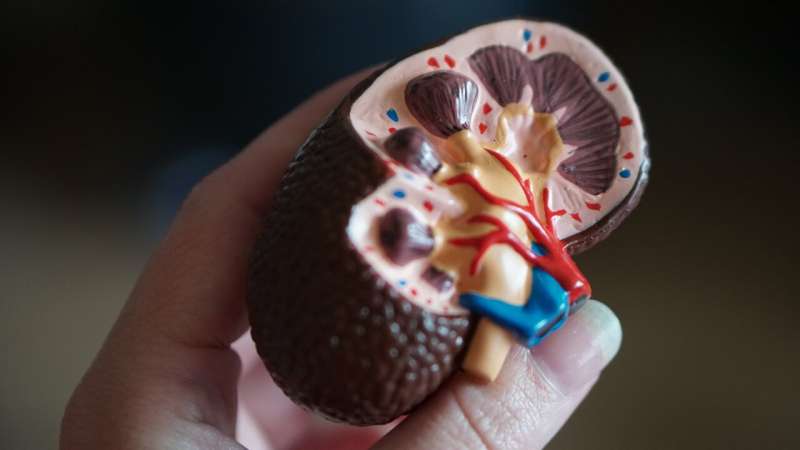Gel to improve development of an arteriovenous fistula holds promise for kidney-dialysis patient care

More than 600,000 people in the United States have end-stage kidney disease, and about 450,000 are kept alive through chronic hemodialysis to remove waste products from their blood.
This requires durable access to a blood vessel site where the dialysis machine can remove and return blood. Such access is created when a surgeon attaches a vein to an artery in the patient. The pressure of the arterial blood forces the vein to expand. After this arteriovenous fistula, or AVF, develops and matures, that enlarged space becomes the lifeline for the hemodialysis patient.
Yet up to 60 percent of AVFs fail to develop adequately, due to smooth muscle cell hyperplasia, which is overgrowth inside the vessel, and inadequate expansion of the vein. This leads to illness and death in dialysis patients, and the treatment of vascular-access dysfunction costs more than $2 billion a year.
An experimental gel may reduce those failures.
Researchers at the University of Alabama at Birmingham and Endomimetics LLC are working to develop the first effective therapy to promote healthy AVF maturation. They recently reported preclinical progress in the journal Biomaterials, showing that an experimental gel helped create a fully developed AVF in rodents, along with significantly improved vascular access.
The UAB and Endomimetics researchers first showed that nitric oxide, or NO, plays an important regulatory role in AVF development. Mice that overexpressed endothelial nitric oxide synthase—an enzyme that synthesizes NO—had reduced intimal hyperplasia development and vein narrowing in their AVFs, compared to control mice. Thus, the researchers reasoned that finding a way to release NO at a newly formed AVF might support AVF development and maturation.
They developed a self-assembling, nanomatrix gel capable of releasing a burst of NO in the first 24 hours, followed by sustained NO release for four weeks.
When the gel was applied to a newly joined artery-vein meant to create an AVF in rats, the gel persisted at that site, and the rats showed a more than 70 percent reduction of intimal hyperplasia formation, as well as an improvement in vein diameter and a smoother blood flow, compared to controls.
“Therefore,” the researchers concluded, “direct application of the NO releasing nanomatrix gel to the AVF anastomosis immediately following AVF creation may enhance AVF development, thereby providing long-term and durable vascular access for hemodialysis.”
Joseph Garner, Ph.D., CEO of Endomimetics, says showing that the AVF gel substantially increases the success rate of AVF development could result in dramatic improvement to the quality of life of patients, as well as a significant decrease in the cost of creating AVFs.
Source: Read Full Article


